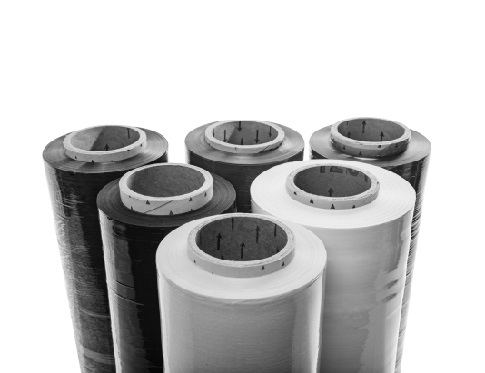Cast vs Blown Stretch Wrap

Cast vs blown stretch wrap? Toronto Stretch Wrap and Danshar Polybag and Resin Inc. offer cast stretch film, which has several advantages over blown stretch film.
Cast stretch film and blown stretch film are made using different processes which give them different qualities. In this post, we will discuss how cast and blown stretch film are produced, as well as the advantages of using cast stretch film over blown stretch film.
How are Cast or Blown Stretch Wrap Produced?

Cast stretch wrap is produced by feeding beads of resin into a barrel which are then constrained through a narrow slotted die. The die creates a sheet of film which then goes through a rolling path with chilled rollers. The cooling solidifies the film and it is made into large rolls of stretch film.
Blown film is manufactured through the blown extrusion process. Blown stretch wrap is created by feeding beads of resin into a heated machine that encapsulates a circular die within it. Granular resin and additives are fed by a heated screw barrel. Then, the resin is forced into a circular die. The heated resin is constrained through the die and then blown out in an upright manner into a bubble. The heated resin is blown vertically. Instead of the film being cooled quickly, the bubble is cooled gradually by air traveling up the tower. The bubble is then changed into rolls of stretch film, while simultaneously cooled by the encompassing air.
The slow cooling process is the reason the wrap comes out hazy and lacking in clarity. Once the air reaches the top of the tower, the film is nipped together and drawn down with guide rollers to the winding and slitting stations.
What are Some of the Advantages of Using
Cast over Blown Stretch Film?
The following are the reasons why cast film the preferred option in the stretch film industry:
1. Cast stretch film has better elongation and stretches further than blown stretch film which gives it more film yield. Blown film can also stretch but requires more force to stretch than cast film. Cast film yields a better stretch than blown film. Cast film can stretch up to 300 percent and provides a more uniform application than blown film.
2. Cast stretch wrap has better visual clarity than blown stretch film. The clear glossy finish of cast stretch film makes it easier to see and scan product identification tags, like barcodes or RFID. The higher level of clarity of cast film also allows for pallet products to be readily displayed on a showroom floor. Blown film is characterized by its hazy optics and lacking in gloss. This reduces the ease in which products can be scanned and identified in the warehouse. The higher levels of gloss in cast film which results from various resins used in manufacturing, as well the quicker cooling process. In warehouses where it is important to locate stock easily, cast film is the preferred option.
3. Cast stretch film is very quiet when released from the stretch roll, whereas blown stretch film is noisy when unwound from the roll and this affects the workplace environment and causes unnecessary distractions on the production floor. The quiet unwind of cast film increases workplace efficiency.
4. Cast stretch film also offers a superior cling. Cast stretch film is produced with two-sided cling which helps pallets stay securely wrapped, whereas blown stretch film is produced with one side cling. The two-sided cling has a higher cling on one side than the other and is a film that sticks to itself. This provides the highest tackiness possible from cast stretch film which allows for maximum holding power.
5. Cast stretch film is more cost-effective than the blown stretch film. This is because the cast film is made by the cast extrusion process which is a faster method and yields more film per hour than the blown extrusion process, which is time-consuming process.
6. Stretch wrapping using cast film is more a time-efficient process than wrapping with blown film. This is because cast film is easier to unwind and takes less time to wrap a pallet. Your employees will not have to work as hard as compared when wrapping a pallet with blown film and can accomplish more stretch wrapping in a shorter period of time, translating into saved costs for your company.
Blown film has its own advantageous characteristics such as excellent puncture resistance, durable and maximum strength, superior cling, and produces overall less manufacturing scrap. Blown film has a very high capacity for load containment, is very hard to tear, which makes it ideal for very sharp instruments.
Cast film, however, has a number of advantages over blown film and is the clear victor. Cast or blown stretch wrap? Cast film is not only better quality than blown film, but it also effectively reduces costs for consumers.
If you have any questions or inquiries about our cast stretch film or any other bundling products, please contact Toronto Stretch Wrap. We happily serve clients in Toronto, North York, Vaughan, Thornhill, Richmond Hill, and other cities in the GTA. We also serve clients nationally across Ontario.
2899 Steeles Ave. W.,
Units 9 & 10,
North York, Ontario
M3J 3A1
Fax: 416-650-1637
For skid quantities of stretch wrap, resin, or plastic bags only, please call
416-993-6804
orderdesk@torontostretchwrap.com
By appointment.